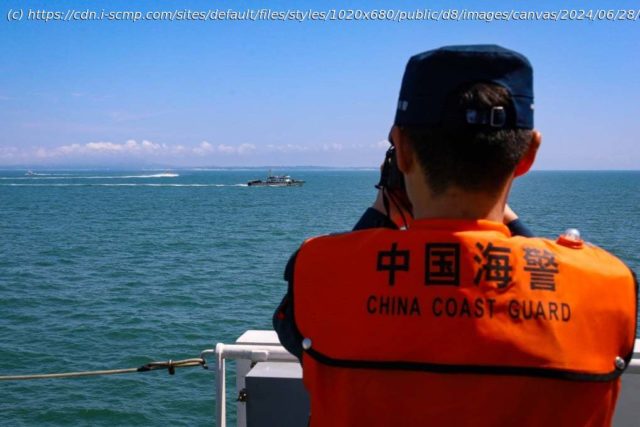After another South China Sea stand-off between Beijing and Manila, we look at how China’s coastguard became so formidable.
The frequent maritime face-offs between the China Coast Guard (CCG) and Philippine vessels have drawn significant attention to the CCG’s formidable capacity in the vast expanse of the South China Sea.
But its presence extends well beyond this strategic and resource-rich waterway in Southeast Asia; it patrols roughly 14,500km (9,000 miles) of coastline and about 3 million sq km (1.16 million square miles) of maritime territory.
One hotspot it surveys is the East China Sea, near the Diaoyu Islands, also known as the Senkaku Islands in Japan, where Beijing and Tokyo have long engaged in territorial disputes. The CCG has also stepped up its operations near the Taiwanese-controlled island of Quemoy – also known as Kinmen – since February, with mainland Chinese vessels reportedly patrolling waters just five nautical miles from Quemoy in the latest stand-off with the Taiwanese coastguard.
It has only taken around a decade for the CCG to evolve into a powerful instrument of China’s maritime strategy. With a fleet of some of the biggest and most heavily armed coastguard vessels in the world, the CCG’s capabilities now far exceed those of many other nations.
“By doubling its number of large patrol ships in the last decade and combining several organisations to form the CCG, China has assembled more than 500 surface vessels into the world’s largest coastguard fleet,” John Bradford, executive director of the Yokosuka Council on Asia-Pacific Studies, said.How was the China Coast Guard formed?
The CCG was formed in 2013 from four maritime administrative agencies in a major overhaul of China’s maritime enforcement agency. Until then, maritime management was largely inefficient and in disarray – described as “five dragons stirring up the sea”. Consolidating them allowed Beijing to pursue a more cohesive maritime law enforcement strategy.
In 2018, the CCG was transferred from the civilian State Oceanic Administration to the People’s Armed Police, which reports to China’s Central Military Commission.
Often referred to as “China’s Second Navy”, the CCG is seen as a quasi-military force and consists of the North, East and South China Sea sub-bureaus.
The 2021 Coast Guard Law outlines the CCG’s multifaceted missions. These include law enforcement operations, safeguarding critical islands and reefs, combating maritime crime, countering smuggling activities, supporting the development and exploitation of marine resources, preserving the marine environment, and managing fisheries.
Of those, law enforcement is the most important task to protect China’s sovereignty and territorial integrity.How many vessels does it have?
Since it was combined into one agency, the CCG has sped up its expansion and fleet modernisation process, so that now, just over a decade later, it has evolved into the world’s largest maritime law enforcement fleet.
Although Beijing does not reveal the exact number of its coastguard vessels, a Japan Coast Guard (JCG) report last year indicated that China now has 157 large regional and oceangoing patrol vessels with full-load displacement of more than 1,000 tonnes – double that of Japan.
The Pentagon’s 2023 report on China’s military power said the CCG operated more than 50 regional patrol combatants (over 500 tonnes) suitable for limited offshore operations, and an additional 300 coastal patrol craft (ranging from 100 to 499 tonnes).






